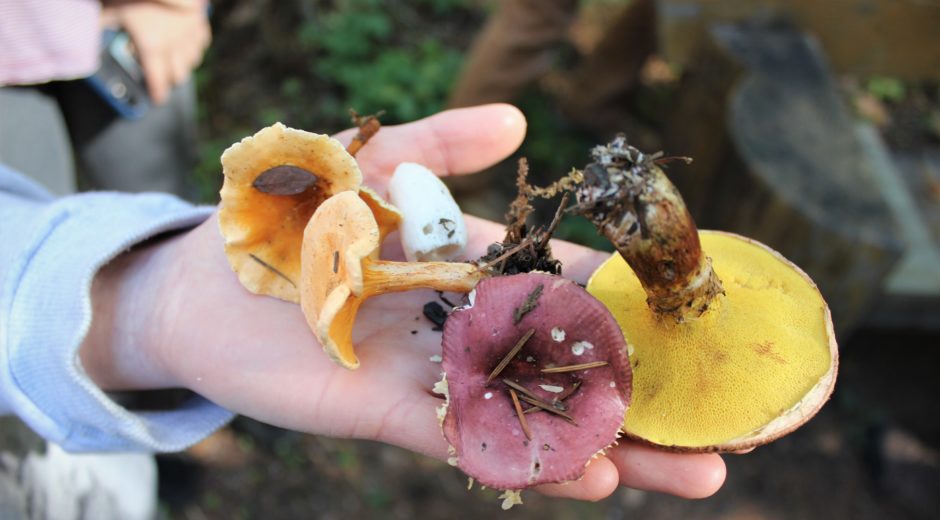Surely you’ve seen them on a hike through a North Coast forest: giant flushes of healthy mushrooms with strange shapes and colorful caps. There are ideal conditions for mushrooms here, and several common species are edible. The best option for beginners is to go with a knowledgeable guide, since many common species have toxic or poisonous look-alikes. Wild mushrooms can also simply be appreciated with your eyes or enjoyed at a number of North Coast eateries in season, like Būsu in Astoria — a Japanese food-inspired food stand that often serves locally foraged treats — or ordered online at North Coast Food Web’s local food marketplace, also in Astoria.

If you decide to try your hand at foraging edible mushrooms on the Oregon Coast, many resources exist to teach you how to identify, harvest, and prepare them properly. The dedicated volunteers at Fort Stevens State Park outside of Astoria usually lead mushroom walks in the fall, so that’s a great place to start. Community ed programs at local community colleges across Oregon offer workshops or forays open to the public, as do mushroom foraging groups like the Cascade Mycological Society based in Eugene, who offer their own Coast forays and keep an updated, comprehensive list of print and online resources, walks, and festivals in Oregon and beyond. Also check online for podcasts and videos offering tips for mushrooming on the Tillamook Coast.
Some of the more common edible species of fall mushrooms in North Coast forests include chanterelles — a deep yellow or yellow and white trumpet-shaped mushroom that emits a characteristic, fruity odor — and hedgehogs, whose little soft spines on the underside of their caps are a tell-tale marker of the species. Shelves of creamy white oyster mushrooms grow on certain kinds of dead trees. Bright red lobster mushrooms love the sandy soils near the beach, as do the large king boletes, whose brown cap looks like a hamburger bun with a spongy underside and a conical stem with a netting pattern.
Although it’s ok to pick wild mushrooms for identification purposes, don’t eat any you can’t clearly identify. If you make a mistake, you may experience vomiting, seizures, organ failure or even death. For the most part, even edible wild mushrooms need to be cooked to neutralize toxins. Before you pick any mushrooms, contact the park or forest management office to check regulations for the area.

